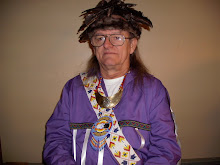CENSUS 2010
WHY THE 2010 CENSUS IS IMPORTANT TO ALL AMERICAN INDIANS
Should I Identify as Native American in the 2010 Census?
It is absolutely critical that all “non-enrolled” Native Americans, and those people that can prove lineal descent from a Native American ancestor, self-identify as “Native American in Combination with One or More Races” when completing their 2010 Census questionnaires! Get the message out – pass this along to your family members and other Indian friends.
Results of the 2000 Census
For the first time ever, the 2000 Census measured “Native Americans in Combination with One or More Races,” That number totaled 4,119,301. The number of Americans that reported themselves “Native Alone” was 2,475,956 (these are considered predominantly enrolled members of a federally recognized tribe. The difference between these two numbers equals 1,643,345. This is significant because this 1,643,345 represents the number of persons that self-identified as “mixed-blood”
It must be pointed out that the 2000 Census was “flawed” - in that it did not provide a method to distinguish what percentage of the 1,643,345 were enrolled members of a federally recognized Indian tribe that chose to identify using this category only. However, it is generally accepted that the vast majority of these (perhaps exceeding 90%) are “non-enrolled” members of a federally recognized Indian tribe.
Many of them are likely to be direct lineal descendents of an “enrolled” member that do not qualify under tribal membership policies that impose a “Content of Degree of Indian Blood” (CDIB) requirement, yet they feel strongly tied to their Indian ancestral heritage. (Example: The great-grandchildren of a ‘full-blood’ Indian will not meet a 25% CDIB).
The 2010 Census will correct this flaw to obtain accurate measures. This is due to the importance these numbers have related to funding formulas directly linked to the federally recognized tribes.
Reasons for Self-Identifying as Mixed Blood Indian in 2010
There are several reasons why “non-enrolled” Native Americans, and those people that can prove lineal descent from a Native American ancestor, should self-identify as Mixed Blood Indians:
The 2010 Census can accurately enumerate the number of mixed blood Indians in America that still feel strongly linked to their Native American ancestry.
It can be used as an indicator that identifies “unmet need” for the Native American population that is “not served” or “underserved.”
How will this benefit Mixed Blood Indians in the United States?
The Census is the single most important event in America that drives all Federal “Formula” and “Need-Based” funding decisions for the next 10-year period. Mixed bloods must not miss this opportunity to document the need! Various American Indian organizations will use these Census 2010 figures over the next 10 years to apply for charitable services and grant programs to meet the needs of non-enrolled Mixed blood Indians. While most federal dollars are earmarked only for use by ‘federally recognized’ tribes – there remains millions of dollars that are “set-aside” to serve Native American Indians that live off reservations. These funding opportunities are made available to “organizations that serve Native Americans.”
Housing, housing assistance, and homeless programs.
Education and education assistance projects.
Economic assistance and employment assistance programs.
Scholarly cultural and heritage research about the Metis Nation.
Health and wellness, substance abuse, and social justice funding.
Financial literacy, entrepreneurship, and business financing loans.
Sunday, February 1, 2009
Subscribe to:
Post Comments (Atom)

No comments:
Post a Comment